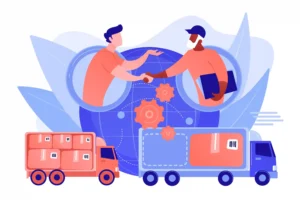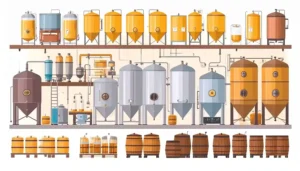Boost Restaurant Sales Performance in 7 Steps
With the rapid evolution in the hospitality industry, one can either match the pace or fall behind in the competition. Many implement a Restaurant Application, and many employ a couple of them. The global health crisis has dealt hospitality one of the greatest challenges of all time. Unfortunately, some restaurants might never reopen, and the survivors find themselves in a different market environment. Dividing tables and plexiglass screens, mandatory masks, and gloves. Sanitizer stations and temperature checks have become commonalities among all restaurants now. Reopening restaurants is a baby step toward getting back to normal. The customers are also trying to adapt to this antipodal dining experience. New laws abiding is mounting pressure on restaurants to comply with sanitary requirements and provide the best dining experience at the same time. Through this blog’s medium, we are sharing the top 7 steps to increase sales performance. For instance, having effective and visible hygiene routines, proactively protecting staff and customers, helping to enforce social distancing, and so on. If you feel hooked so far, read it further. #1 Off-Premises Dining Using a Restaurant Application Nothing is better than enjoying food from your home’s comfort. This trend has driven the recent years. In 2018, according to some researchers, home deliveries contributed 59% of restaurant sales. However, the stakes have changed since this pandemic has accelerated the trend. Restaurants that branched out to home delivery services are the ones that could successfully survive the pandemic. It made sense to keep the home delivery services running, even after reopening all the restaurants. There could be some customers who might feel uneasy when it comes to dining in. Provide off-premises dining operations and manage them with Restaurant Application. #2 Enforce Social Distancing Screens, Booths, table dividers, private rooms, taped-off tables and seats, and clear floor markings have become the new yardsticks. Restaurants establish efforts in enforcing social distancing. A Vision Quality Analysis can also help you monitor social distancing implementation. Some restaurants have even adopted crazy hacks such as placing mannequins on alternate seats and encouraging customers to wear big hats. Although these attempts might lighten up the environment, social distancing is something you cannot take casually. While makeshift booths and plexiglass might affect your restaurant ambiance, customers are getting accustomed to the changes at least for the short to medium term. You can employ Restaurant POS Software that promotes contactless ordering and payment. LS Retail is one of the latest Restaurant Application which provides distance-friendly features to the customer. #3 Introduce New Menus Restaurants are being smarter by introducing new menus and pop-ups to their customers. Rescheduling their tactics and opening up to more viable options to reach as many customers as possible will generate sales as well as retain jobs. Dine-in is not something customers require these days. Using a Restaurant Application can do the market analysis on your behalf. It is better to understand market situations as well as customers to make strategies easily. #4 Enforce Contactless Ordering and Payment Consistent restaurant reforms in payment methods drive contactless payments. The widespread adoption of PIN, chip, and contactless payment terminals has made transaction recording easier for restaurants. Apart from this, they obtain convenience, safety, and speed. Restaurant Management Software can make this easier. For instance, in McDonald’s, contactless payment terminals are established in all their chains, combined with protective panels on counters and drive-through services. Kiosks remain limited, with table tents, screens, and keypads being sanitized after each use. Restaurants are holding on to this opportunity and moving to Restaurant POS Solution to support contactless payments, invisible payments, and digital wallets. Those leading the way, pick a comprehensive payment and management Restaurant Application that keeps them going with ongoing market dynamics with ease. #5 Loyalty Programs Nothing draws customers more than loyalty programs. Read your customers through their transactional history and preferences. Carefully designed offers meals and discounts for individuals or a classified set of customers. Encouraging deliveries is the best way to comply with the social distancing rules. Boost sales on certain days or for certain hours through happy hours using Business Intelligence and effective strategies. Allow coupons and points that they could redeem whenever they make their next purchase from your restaurant. Loyalty programs specifically designed for an individual or a group make them feel special and valued. Taking care of their preference and addressing them as their special customers reflects warmth and positivity that drives them back to your business. #6 Automate Kitchen Operations While restaurants are taking enough measures to protect their customers, it becomes a greater challenge to safeguard their kitchen staff. Restaurants are coping with this challenge by trailing smaller staff teams and staggered shifts. Regular health monitoring before entering the kitchen, constant kitchen sanitization, and social distance monitoring is doing the job. Some technical solutions are equally contributing with a tool called Kitchen Display Systems (KDS). A KDS displays orders from the Restaurant POS straight to the kitchen screen, this helps enhance communication while ensuring minimum contact between the front office and the back-office staff. This Restaurant Application also helps to streamline kitchen operations by displaying the accurate preparation order automatically. #7 Ensure Visible and Effective hygiene Routines Hygiene has already been the topmost priority in the Hospitality Industry, and this pandemic has accelerated the requirement threefold. Most businesses already comply with strict hygiene regulations such as reminding staff to wash their hands regularly, sanitizing maximum tough areas, and allowing a day off to weaker or ill staff. No matter how strict your hygiene process is, this is high time to communicate your hygiene policies with the customers. If you want your diners to show up once again, you may transpire your hygiene policies straight and assure your seriousness towards their safety. Some restaurants are even stepping up and disinfecting cutlery right before their meals in front of them. Revolutionization in the restaurant industry has imposed the need for a Unified Restaurant Application, LS Retail is at the top of the list. Trident Information System is
Boost Restaurant Sales Performance in 7 Steps Read More »











